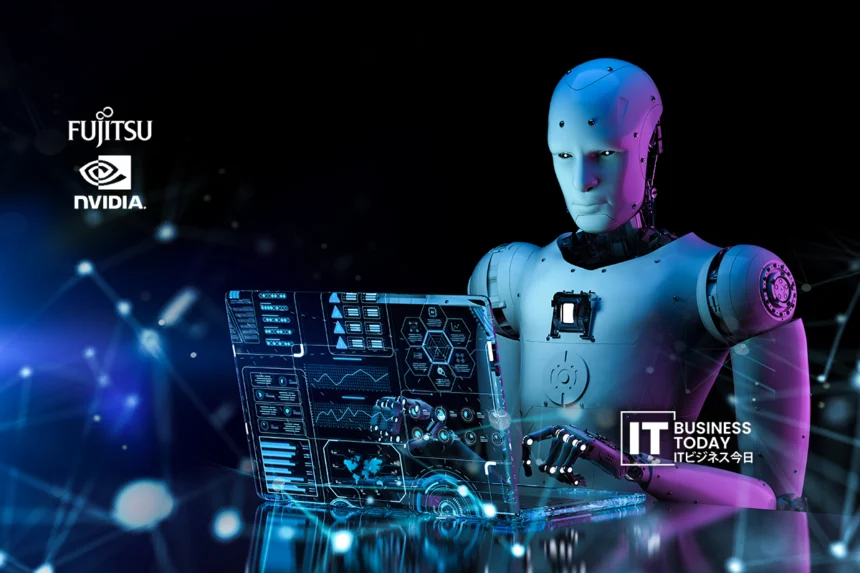Nvidia and Fujitsu announced a major partnership in Tokyo. They plan to build advanced AI infrastructure in Japan. Their goal is to provide AI-driven robotics and computing solutions. They focus on health, environment, and industry. They aim to achieve this by 2030.
The companies did not share the budget or the full project plan. However, they stated their efforts will focus on the Japanese market. They will use Fujitsu’s local presence and Nvidia’s GPU and AI technology. There may be plans to expand to global markets later.
Possible robotics collaborations, like with Yaskawa Electric, were mentioned. This effort is ‘humancentric.’ It aims to tackle Japan’s demographic challenges and boost productivity through AI and automation.
Also Read: Classmethod Opens “Classmethod AI Experience Center”
This deal is more than a headline, it may well be a strategic inflection point in Japan’s AI and robotics trajectory. Below, let’s explore how this collaboration could reshape Japan’s tech landscape and what businesses should watch.
Why This Move Matters: Strategic Context
1. Japan doubling down on sovereign AI capacity
Japan has long been worried about overreliance on foreign AI technology, cloud platforms, and compute. This Fujitsu–Nvidia pact signals a renewed push to build homegrown, or at least domestically anchored, AI infrastructure. For Japan, having a ‘national AI backbone’ can help in resilience, control over critical tech, and national competitiveness.
2. GPUs + system integration = a new pillar
Nvidia’s GPUs, software stack, and AI ecosystem are globally leading. By pairing them with Fujitsu’s systems integration, customer relationships, and deep local expertise, Japan can speed up ‘AI industrialization’ across domains like manufacturing, robotics, healthcare, smart cities, and environmental tech.
3. Addressing societal needs via AI
Japan faces big challenges due to its aging population, labor shortage, and shrinking workforce. AI and robots will boost productivity. They will automate tough jobs and support social welfare and healthcare systems. This collaboration tackles these macro challenges head-on.
4. A platform for scale and export
While the initial phase is Japan-centric, building robust AI infrastructure with global interoperability may allow companies to export AI/robot solutions built on this platform. In other words, Japan as a base, not a niche.
Impact on Japan’s Tech & Business Ecosystem
A. Acceleration of robotics and automation firms
Robotics companies in industrial, service, and elder-care sectors can greatly enhance their value by using the Nvidia + Fujitsu AI stack. This lets them use a strong, high-performance AI platform. They don’t have to build the compute layer from scratch.
B. Infrastructure, cloud, and edge compute players benefit
High-performance computing, edge AI, on-device inference, distributed AI, and hybrid cloud architectures will see a big rise in demand. Infrastructure vendors, system integrators, hardware acceleration firms, and middleware providers will seize new chances. They will design, deploy, and optimize the AI backend.
C. Data & platform ecosystems become more critical
AI platforms need strong data systems. These systems must handle data collection, pipelines, model training, versioning, monitoring, governance, explainability, and compliance. Japanese companies making tools for data engineering, MLOps, AI governance, security, and explainable AI will thrive in this space.
D. Foreign entrants face a redefined competitive environment
Global AI firms must reckon with a partner + local platform model in Japan. Rather than competing in isolation, they may need to align with Fujitsu or local players. Entry strategies will likely pivot toward collaboration, licensing, or localized delivery.
E. Domain verticals as growth engines
Sectors like manufacturing, healthcare, smart cities, environmental monitoring, and customer service may become early adopters. Fujitsu’s existing relationships in public and industrial sectors mean vertical-specific AI solutions, like robotics with domain logic, will likely develop quickly.
Risks, Challenges & What Could Make or Break It
Execution & scale: Building national-scale AI infrastructure is nontrivial. Integrating hardware, software, models, operations, security, and domain specificity is complex.
Computational costs and energy: Our top-tier AI setup needs a lot of power and cooling. Let’s prioritize efficiency, sustainability, and cost management.
Local trust and adoption: Japanese customers, businesses, government agencies, hospitals, and manufacturers, value reliability. They value privacy, clear services, and local support.
Competition and alternative approaches: AI ecosystems from the U.S., China, and EU are fiercely competing in robotics, AI platforms, and computing. Japan must differentiate itself.
Regulation, data sovereignty, and policy: As AI grows, new rules will come for data, privacy, algorithm accountability, safety, and liability. These could slow down or change how AI is used.
The Big Picture: Japan’s AI Leap or Rebalancing Moment?
This Nvidia–Fujitsu pact is less about a single product, and more about infrastructure posture. It’s a bet that Japan can, and should, be not just a consumer of AI, but a competitive platform builder in the age of robotics and intelligent systems.
If successful, it can:
- Strengthen Japan’s sovereignty over critical AI stack components
- Accelerate deployment of AI + robotics in domains that matter (aging population, climate, industry)
- Attract investment, talent, and spin-off innovation
Change how AI is packaged and exported out of Japan
For tech businesses, both domestic and foreign, the message is clear: build for integration, partner with the new infrastructure, and adapt offerings to mesh with this evolving foundational AI platform. The next waves of innovation may ride on whether you’re aligned with the backbone, not just building on top of it.







